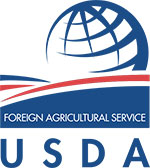Although no detections of highly pathogenic avian influenza have been recorded in the United States for more than seven weeks, the toll the virus has taken on the nation’s poultry and egg industry this year is staggering.
The impact of lost exports alone – the result of a flurry of AI-related trade restrictions imposed on imports of US poultry and egg products – reached nearly $390 million during the first half of 2015.
 In precise terms, the combined value of US poultry and egg exports for the first half fell by 14% from the same period last year to $2.4054 billion, a decline in value of $386.3 million, according to trade data compiled by the US Department of Agriculture’s Foreign Agricultural Service.
In precise terms, the combined value of US poultry and egg exports for the first half fell by 14% from the same period last year to $2.4054 billion, a decline in value of $386.3 million, according to trade data compiled by the US Department of Agriculture’s Foreign Agricultural Service.
This sharp drop in export value, one of the largest ever for a January through June span, is a graphic example of the economic effect this year’s multi-state outbreak of highly pathogenic avian influenza has had on the industry.
The good news for American exporters is that some countries have begun lifting their import restrictions on poultry products originating in certain states, now that more than 90 days have passed since affected farms were cleaned and disinfected, as is recommended by the World Organization for Animal Health (OIE).
Hong Kong has removed restrictions on 10 previously banned counties in the states of Arkansas, Washington, Oregon and California. Japan and Singapore have also recently lifted restrictions. Some US trading partners have been slow to remove restrictions, however. Among them is Mexico, the largest export market.
While the HPAI virus is on somewhat of a hiatus during the warmer months of summer, the US industry is bracing for its possible return this fall, as migratory birds – thought to be the primary vectors of the virus – head south for the winter. State and federal officials worry that wild birds will carry the virus into the Atlantic flyway that cuts through the heart of the main poultry-producing areas of the mid-Atlantic and Southeast.
Exporters, meanwhile, hope for the best after a disheartening first half of the year. Poultry meat shipments abroad for January through June plummeted by 9% to 1.84 million metric tons, while value fell by 15% to $2.241 billion. The impact goes beyond exports, as more product on the domestic market means lower prices that add to the losses.
Exports of poultry meat for the month of June were down 14% to 305,504 tons, while value dipped by 25% to $348.8 million, compared to the same month a year earlier.
Broilers  Monthly broiler exports (excluding chicken paws) for June fell by 9% to 255,721 tons, and value slid by 23% to $262.5 million.
Monthly broiler exports (excluding chicken paws) for June fell by 9% to 255,721 tons, and value slid by 23% to $262.5 million.
For the first half of the year, broiler exports dipped by 9% to 1.52 million tons as value fell by 16% to $1.68 billion. Korea’s blanket ban on all US product earlier this year because of HPAI was a significant contributor to the decline.
Export volumes to key markets for January through June were mixed: Mexico, down 6% to 330,963 tons; Taiwan, up 52% to 106,274 tons; Canada, up 22% to 87,067 tons; Hong Kong, up 49% to 79,519 tons; Cuba, 71,076 tons, up 1%; Angola, 67,420 tons, down 29%; Iraq (including trans-shipments via Turkey), 55,976 tons, down 37%; Guatemala, 48,803 tons, down 24%; Georgia, 46,402 tons, up 4%; and Vietnam, 45,298 tons, up 78%.
Chicken Paws
June paw exports fell by 35.3% to 16,657 tons, while value was off by 44.4% to $20.9 million. Shipments to Hong Kong decreased by 22% to 15,442 tons.
Cumulative exports of paws for the first half declined by 21.6% to 110,315 tons as value dropped 25.5% to $148.6 million.
Turkeys
June was not a good month for US turkey exports, which fell by 40% to 18,945 tons and value dropped by 29% to $47.1 million, thanks largely to decreased shipments to Mexico (down 45%).
Cumulative first-half turkey exports decreased by 21% to 106,786 tons, while value fell by 15% to $285.7 million.
The top five markets during the first six months of the year were Mexico, Canada, Hong Kong, Benin and Japan. They accounted for 77% of total first-half turkey export volume, with Mexico alone accounting for 63%.
First-half turkey exports to Mexico were 79,597 tons, down 22%; Canada, 5,131 tons, up 2%; Hong Kong, 4,647 tons, up 64%; Benin, 3,830 tons, down 0.03 %; and Japan, 2,973 tons, down 25%.
Table Eggs
June table egg export volume also took a hit, falling by 24% for the month to 9.97 million dozen. The export value of eggs actually increased slightly to $14.6 million, however, because of higher market prices brought about by HPAI-induced domestic shortages.
Thanks in part to a strong first quarter, cumulative January-June table egg exports rose by 5% to 83.2 million dozen and value jumped by 16% to $101.14 million.
The top five markets of Canada, Mexico, Hong Kong, the Bahamas and the Netherlands Antilles accounted for 95% of total exports for the period, and Mexico alone accounted for 40%.
Processed Egg Products
For egg products, June export value plummeted by 58% to $5.3 million. Export sales to Japan were $1.9 million, down 37% year over year, while export value to Mexico was $0.34 million, down 91%.
The cumulative first-half export value of egg products fell by 14% to $62.8 million. Export value to Japan decreased by 15% to $20.5 million, while exports to Mexico dipped by 5% to $17.7 million. Exports to the EU grew by 14% to $5.95 million, exports to Canada and Hong Kong decreased by 21% and 19% to $7.3 million and $1.7 million, respectively. Export sales to these top five markets totaled $53.11 million, accounting for 84.5% of total exports of US egg products.
Total egg exports (table eggs plus egg products in shell egg equivalent units) for the first half were 145.13 million dozen, down 9% from the same period a year earlier, with an export value of $164 million, up 2%.





